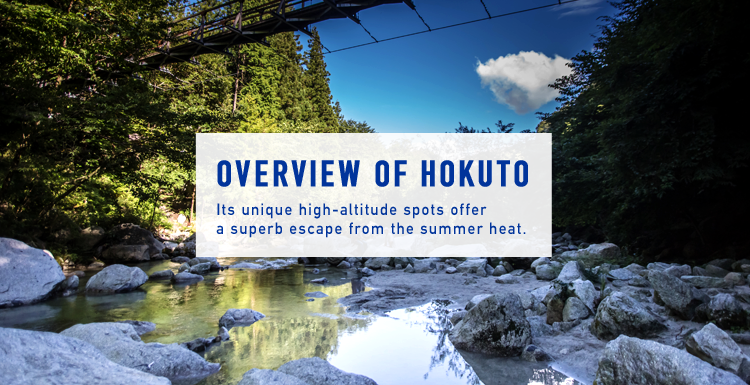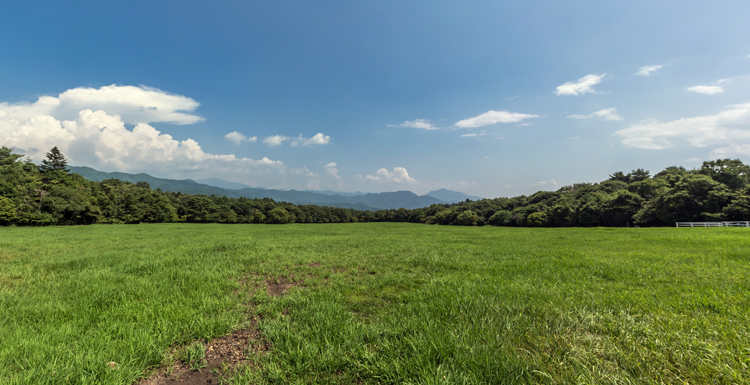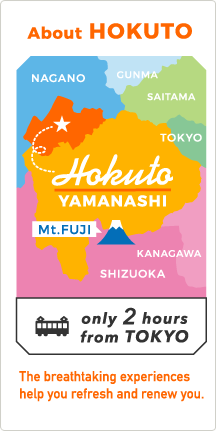VISITO HOKUTO
About
Hokuto City covers a very large area—603 ㎢ and is enclosed on three sides by tall mountains. The Mt. Yatsugatake range lies on the city’s northern boundary, Mt. Kai-Komagatake and the Minami Alps dominate the western border, and to the east are Mt. Kayagatake, Mt. Mizugaki and other peaks in the Chichibu Mountains rising more than 2,000 m above sea level. The expansive Kofu valley opens up to the south of Hokuto, with the majestic contours of Mt. Fuji visible beyond that. Within the city limits, there are dwellings between 400 m and 1,400 m altitude, and the nature, landscape, and social infrastructure woven into this topography forms are diverse array of spaces.
The Hokuto municipal area comprises three distinct topographical zones separated by two rivers—Kamanashigawa and Sudamagawa. Within these areas, there were originally eight communities, each with its own history and culture. These communities merged 10 years ago to form the present-day Hokuto City.
The name Hokuto (with a literal meaning of “northern forest”) was chosen to signify the city’s position in the north of Yamanashi Prefecture. The name was coined to be historically neutral, so that it could encompass the three distinctive areas of Yatsugatake, Mt. Kayagatake/Mt. Kinpu, and Mt. Kai-Komagatake. Hence, Hokuto City is not perceived as a single sightseeing area, but rather three zones, each dominated by a particular mountain range. Each zone boasts its own unique appeal and collection of places to visit. In the Mt. Kayagatake/Mt. Mizugaki area are the communities of Akeno and Masutomi-Tsugane. In the Mt. Yatsugatake area there are the communities of Kiyosato, Oizumi, Nagasaka and Kobuchizawa. The Mt. Kai-Komagatake area comprises the communities of Hakushu and Mukawa.
Although Hokuto lacks any big-name manmade tourist attractions, such as theme parks or shopping malls, and is not one of Japan’s historical cultural centers, Hokuto’s stunningly varied natural features and the communities that thrive at the foot of its scenic mountain ranges give it strong appeal for many types of visitors.
By train it is just two hours from Tokyo on the JR Chuo Line, and only three hours from Nagoya. Within the city limits, visitors may experience a wide variety of nature, history and culture in a 30-minute travelling radius. Hence, even with only a limited itinerary, visitors may relax in one place while enjoying the area’s true charms. Good access to several airports (Toktyo/Narita, Tokyo/Haneda and Nagoya/Centrair) makes visiting Hokuto even easier. We hope to see you soon!
















